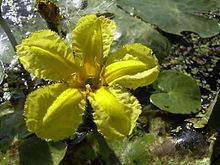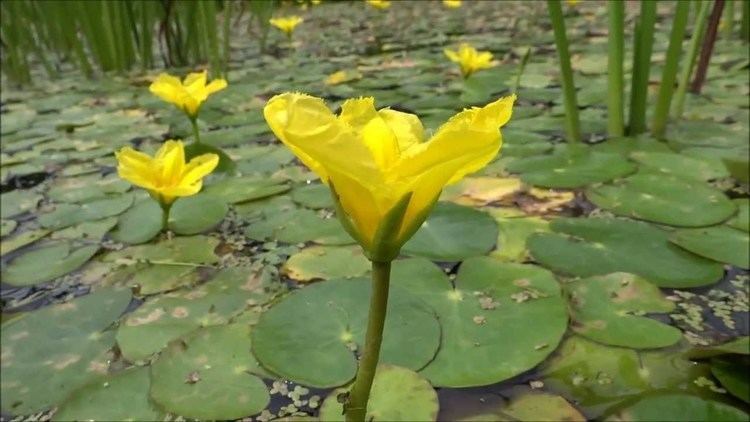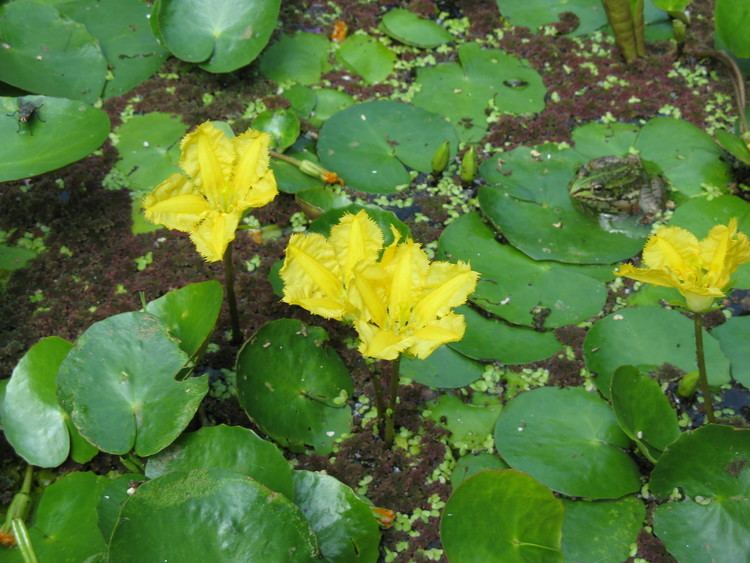Rank Species | Genus Nymphoides Higher classification Nymphoides | |
 | ||
Similar Nymphoides, Menyanthaceae, Nymphoides indica, Hydrocharis morsus‑ranae, Menyanthes | ||
Nymphoides peltata marginal aquatic pond plant
Nymphoides peltata (syn. Villarsia nymphaeoides, fringed water-lily, yellow floatingheart, water fringe) is an aquatic plant of the family Menyanthaceae native to Eurasia. It has cordate floating leaves that support a lax inflorescence of yellow flowers with fringed petal margins. The fruit is a capsule bearing many flattened seeds with stiff marginal hairs.
Contents
- Nymphoides peltata marginal aquatic pond plant
- Water fringe nymphoides peltata syn villarsia nymphaeoides 2013 08 17
- Uses
- References

It is commonly found in ponds and slow moving bodies of water. It cannot grow in the shade and has to have a relatively deep body of water. Flowers bloom in July to September, while the seeds ripen from August to October.
Flowers of N. peltata are heterostylous and weakly self-incompatible.
Water fringe nymphoides peltata syn villarsia nymphaeoides 2013 08 17
Uses

Nymphoides peltata is an edible plant. Leaves are cooked as a potherb, and so are the stems, but only the interior of the stem is eaten. Flowers are also cooked as potherbs. Seeds are ground and used for other culinary purposes. The fresh leaves are commonly used to treat headaches.
The plants are commonly sold for use in ornamental water gardens. Outside their native range, however, they can escape cultivation and become nuisance noxious weeds. Nymphoides peltata has become an increasing problem in Michigan, where it has been declared one of the "Most Wanted Aquatic Invasive Species" by the Michigan DNR. It has become a problem as an invasive species due to how easily its seeds spread through water flow. It is physically controlled by pulling its roots out of water by hand.

